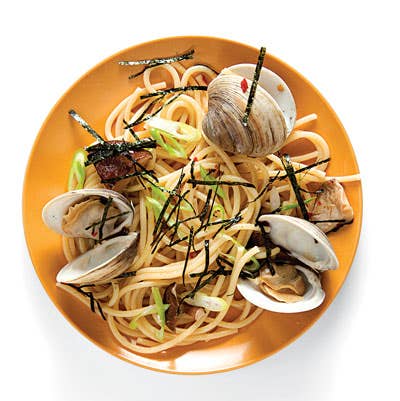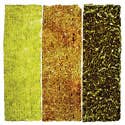
Techniques
The World of Nori (Japanese Seaweed)
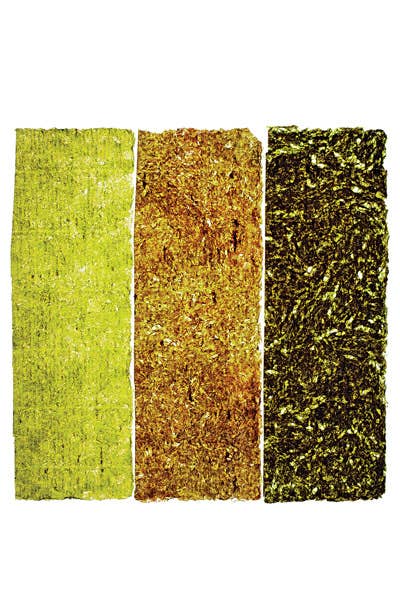
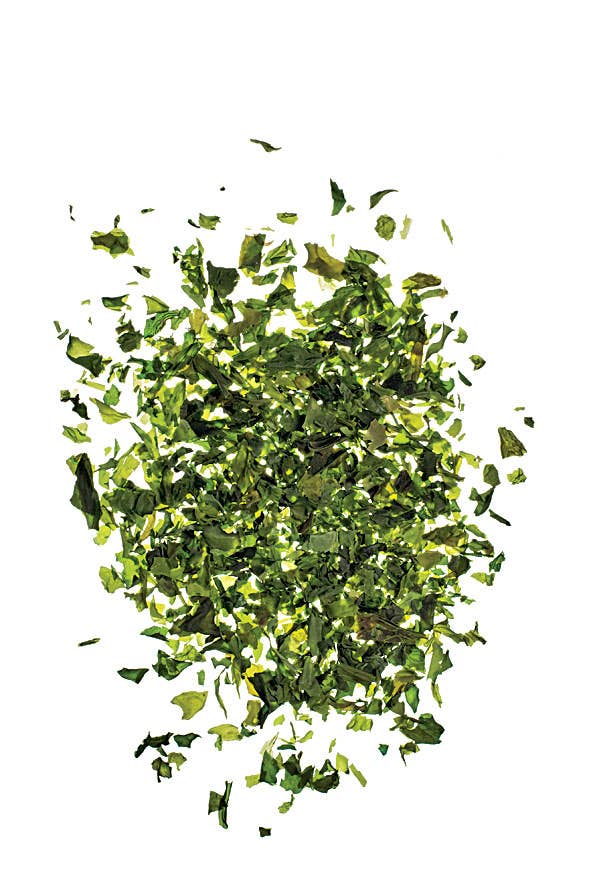
These delicate flakes of dried, emerald-green algae have a powerful mushroom flavor and an earthy aroma. Sprinkle aonori over dishes like fried noodles, savory okonomiyaki pancakes, and steamed white rice, or use it to boost the flavor of soup broth and tempura batter. Michael Kraus
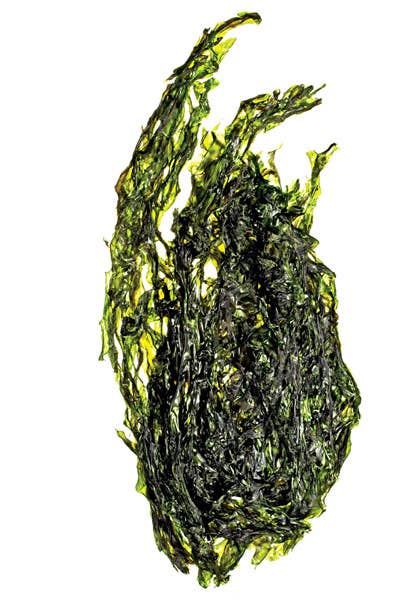
Iwanori, or rock nori, is a green algae traditionally harvested from rocks near the mouths of rivers. Sun-dried and sold whole in delicate clusters, it has a concentrated, almost sweet marine flavor and is often added to tangy foods, like salad dressings. Michael Kraus
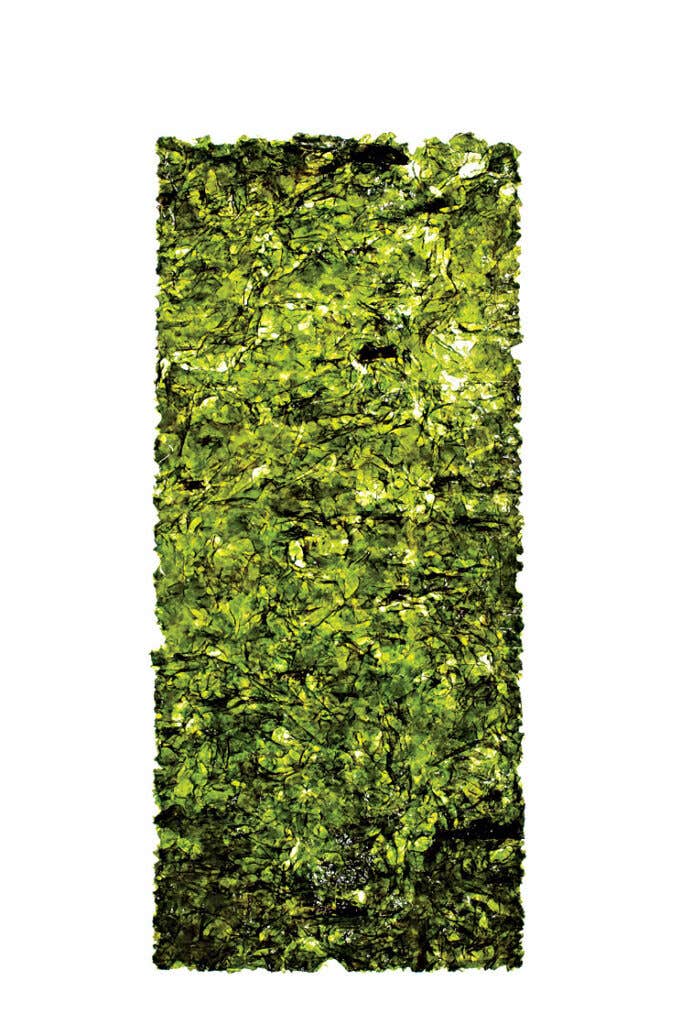
Ajitsukenori is a nosher's nori. Made of yakinori sheets that have been basted with flavorings like soy sauce, sweet cooking wine, and wasabi and precut into ready-to-eat rectangles, this seasoned nori is great for garnishing a bowl of rice, adding to ramen noodles, or simply eating as a snack. Michael Kraus
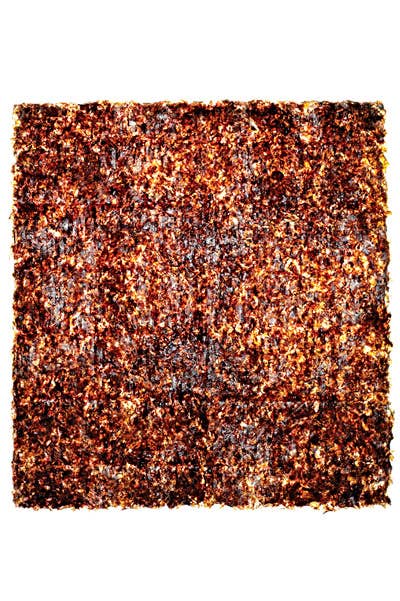
These dried sheets of untoasted nori are deep purple to black in color, springy in texture, and vegetal in taste. Namanori, meaning "fresh" or "raw" nori, is the most prized form of nori available: made from the highest-quality seaweed harvested at peak season, it's more expensive and harder to find than toasted yakinori. Some chefs toast namanori over charcoal immediately before using it in dishes like conical temaki hand rolls to give it a crisp texture and smoky flavor. Michael Kraus
ADVERTISEMENTADAD
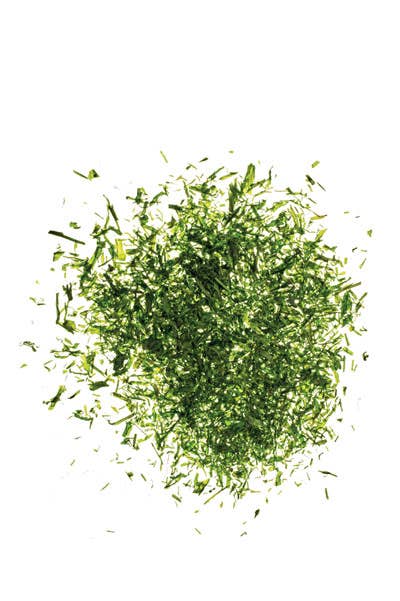
Aosa nori, or sea lettuce, is a green algae that can closely resemble aonori, but it's much milder in flavor, and less expensive, too. While its translucent, slightly bitter leaves can be eaten raw as a salad or cooked in soups, it's more typically sold dried in flake or powder form. In Japan, aosa nori is widely used as a savory seasoning in processed foods like potato chips and rice crackers. Michael Kraus
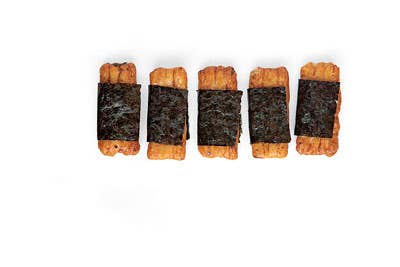
These salty-sweet rice crackers, flavored with soy sauce and sugar and wrapped in tiny squares of seaweed, are a popular (and addictive) snack. Todd Coleman
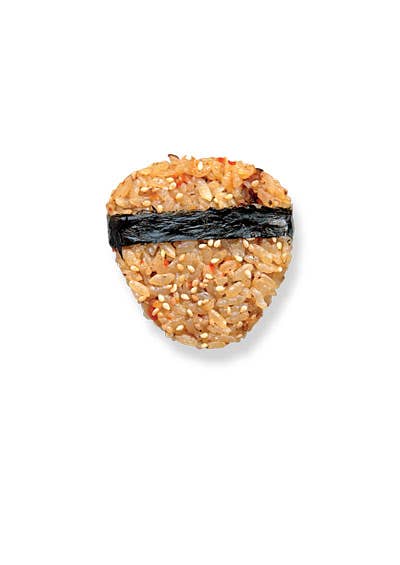
Practically every convenience store in Japan sells these hand-shaped rice balls, made with plain or seasoned rice, stuffed with savory fillings like umeboshi (pickled plum) or fish roe, and enveloped in or garnished with sheets of nori. Todd Coleman
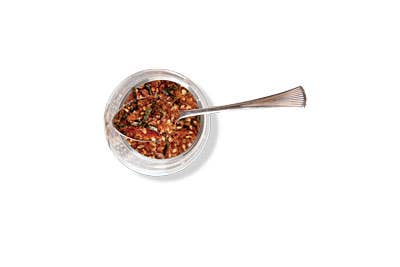
As essential to the Japanese pantry as salt and pepper are in the U.S., this ready-to-use spice mix combines sesame seeds, bonito flakes, and nori. Try it sprinkled over warm rice. Todd Coleman
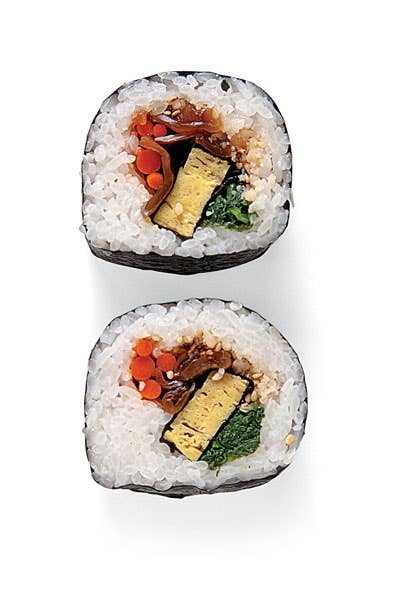
Full-size sheets of yakinori form the flavorful outer layer of thick futomaki sushi rolls. The typically vegetarian fillings can include carrots, dried gourd skins, and thin slices of omelette. Todd Coleman
ADVERTISEMENTADAD
Japanese-Style Linguini with Clams
This Japanese take on the Italian classic, made with sake-steamed littleneck clams, shiitake mushrooms, and julienned yakinori, is our new favorite way to eat pasta. The mushrooms and seaweed lend the umami notes provided by pancetta in the original dish.
Keep Reading
Continue to Next Story
ADVERTISEMENTADAD
